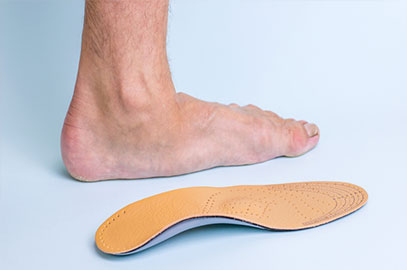
4 Flat Feet
Flatfeet is one of the most common conditions we treat. Flat feet are common amongst children and adults. Flat feet come in many forms but one thing they all share in common is partial or total collapse of the arch. Flatfeet can be evident at birth or may show up years later in life. If flatfeet are holding you back come and see some of the treatment options we offer. Whether flatfeet are symptomatic or asymptomatic treatment options remain the same. Symptomatic flatfeet exhibit symptoms that include pain, limitation of activity, feet feeling tried and achy at the end of the day. Other common findings include outward tilting of the heel and forefoot, difficulty with shoe gear and decreased energy when participating in any physical or sports activities.
Diagnosis:
The diagnosis of flatfeet is made through clinical and radiographic evaluation. The foot and ankle specialist observe how the patient walks and the feet are oriented when the patient stands and sits. Flatfoot deformity can also stem from problems related to the legs, knee and hip. Thus a thorough biomechanical examination is always warranted.
Treatment:
Custom Orthotic devices may be considered for most cases of asymptomatic flatfoot. In the case of symptomatic flatfeet, the patient may benefit from activity modification, custom orthotic devices, physical therapy as well as shoe modification.
In cases where conservative care has been exhausted and minimal improvement is obtained surgery may be necessary to relieve the pain and symptoms the patient is experiencing. The purpose of surgery is to decrease pain and improve foot function. The surgical procedures can range from a myriad of procedures and depend on the type of flatfoot and degree of deformity present.
